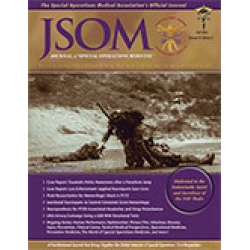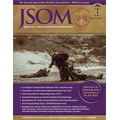Risk Factors for Injuries During Airborne Static Line Operations
Knapik JJ, Steelman R 14(3). 95 - 97 (Journal Article)
US Army airborne operations began in World War II. Continuous improvements in parachute technology, aircraft exit procedures, and ground landing techniques have reduced the number of injuries over time from 27 per 1,000 descents to about 6 per 1,000 jumps. Studies have identified a number of factors that put parachutists at higher injury risk, including high wind speeds, night jumps, combat loads, higher temperatures, lower fitness, heavier body weight, and older age. Airborne injuries can be reduced by limiting risker training (higher wind speeds, night jumps, combat load) to the minimum necessary for tactical and operational proficiency. Wearing a parachute ankle brace (PAB) will reduce ankle injuries without increasing other injuries and should be considered by all parachutists, especially those with prior ankle problems. A high level of upper body muscular endurance and aerobic fitness is not only beneficial for general health but also associated with lower injury risk during airborne training.


 Español
Español 




